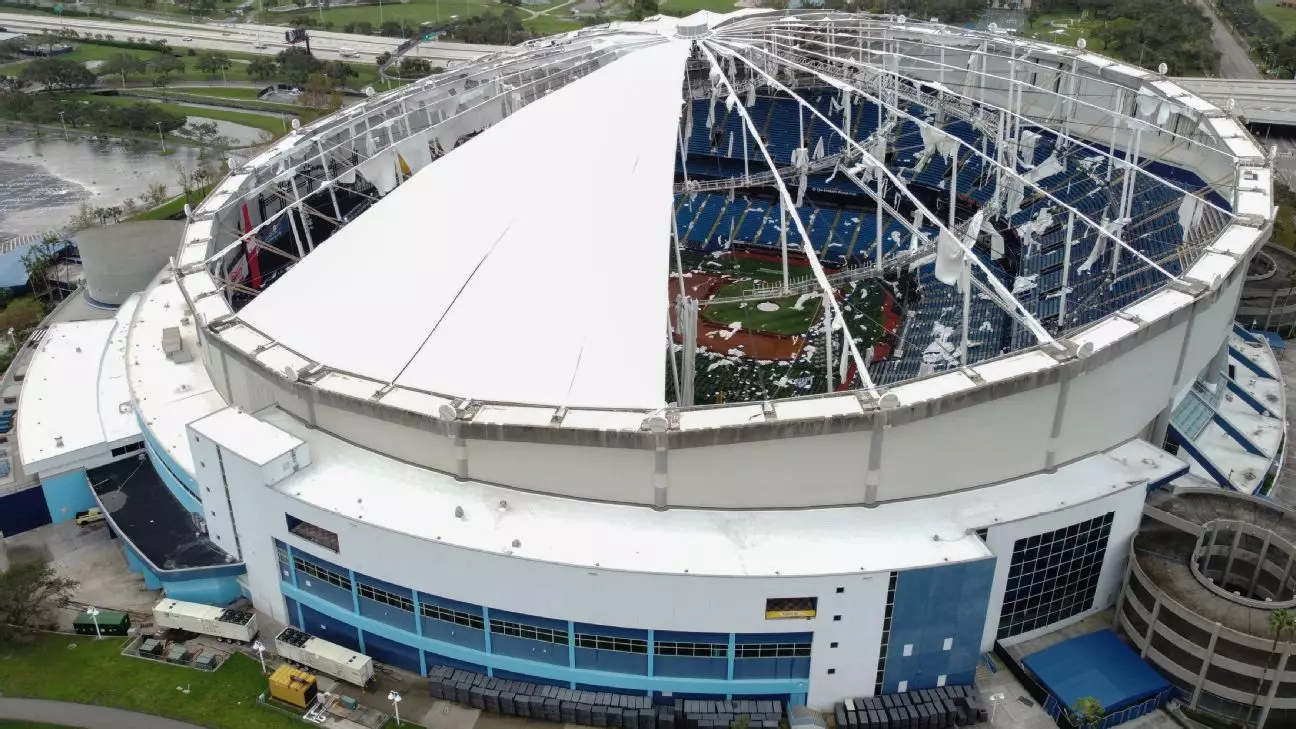In a move that shocked fans and the broader baseball community, the Tampa Bay Rays have announced they will halt progress on a proposed $1.3 billion stadium in St. Petersburg. Principal owner Stuart Sternberg publicly regretted this decision, attributing the halt to unforeseen complications arising from devastating hurricanes and significant financial delays. This declaration marks not only a pivotal moment for the organization but reflects the challenges that often besiege ambitious projects in the realm of sports and entertainment.
The proposed stadium was envisioned as a centerpiece of a sprawling $6.5 billion redevelopment plan for the Historic Gas Plant District. With promises of revitalizing the area and boosting local economy, the announcement had once ignited hope and excitement among fans, city officials, and business owners alike. Yet, the tides have turned dramatically. What was once seen as a transformative opportunity is now entangled in uncertainty, a testament to the frailty of any ambitious plan when faced with the unpredictability of nature and finance.
Complications and Consequences
Sternberg’s announcement unveiled a host of complications that effectively derailed the project. After Hurricane Milton wreaked havoc on Tropicana Field—now rendered unplayable—any prospect of a smooth transition disappeared. The aftermath of the storm has left the Rays scrambling just to maintain their presence in the region while confronting long-term viability. The franchise is now ensnared by contractual obligations to play three more seasons at the weather-damaged Tropicana Field, which has not only delayed their ambitions but also caused fans concern over the team’s stability within the Tampa Bay area.
Adding to the drama, the team faced stringent conditions to secure necessary public financing for the new stadium, including a daunting commitment of $700 million from their end. As it stands, an extensive range of logistical challenges—many of which had been overlooked—has become a substantial barrier to progress. The pressure is mounting, and the Rays are caught in a delicate balancing act between honoring their legacy and securing a sustainable future amid shifting sands.
Adapting to Change: A New Temporary Home
In the interim, the Rays will shift their operations to the New York Yankees’ spring training facility in Tampa, an unexpected twist that could influence team dynamics and fan interactions. Steinbrenner Field, accommodating just 11,000 spectators, presents a stark contrast to the once-bustling Tropicana Field. Nevertheless, this temporary relocation could offer a fresh perspective; it invites the Rays to reconnect with their devoted fanbase in a more intimate setting, potentially sparking renewed enthusiasm for the game.
While Sternberg expressed gratitude towards the City of St. Petersburg’s efforts in tackling the challenges presented by the Tropicana Field restoration, the cloud of uncertainty surrounding the team’s long-term prospects continues to loom large. The team averages only 16,515 fans, placing them near the bottom of Major League Baseball attendance ratings, underscoring a critical need for engagement and community connection—something that the impending season could test.
Looking Ahead: The Quest for a New Identity
As the Rays navigate this tumultuous period, they exemplify the resilience required in the face of adversity. Their journey serves as a reminder of the perseverance needed to rise above challenges, a crucial trait in the sports world. The team stands at a crossroads, balancing past loyalties with future aspirations as they seek a solution that preserves their identity while galvanizing the support of a passionate fanbase. The call for community solidarity has never been more pressing, as the Rays strive to reclaim their place not just as a team, but as a cornerstone of Tampa Bay’s vibrant culture.


Leave a Reply